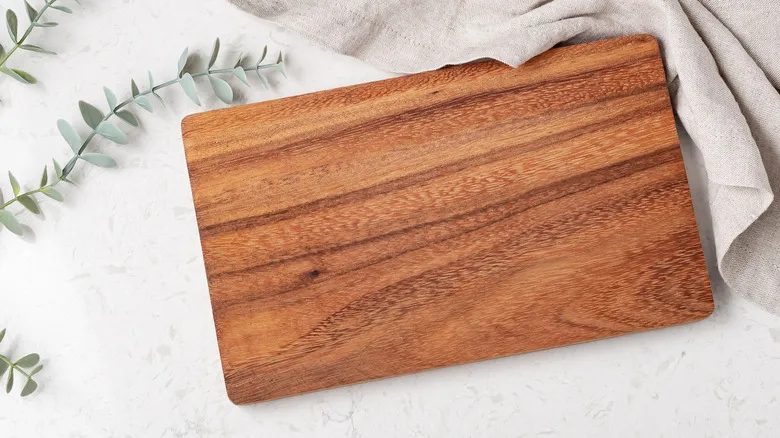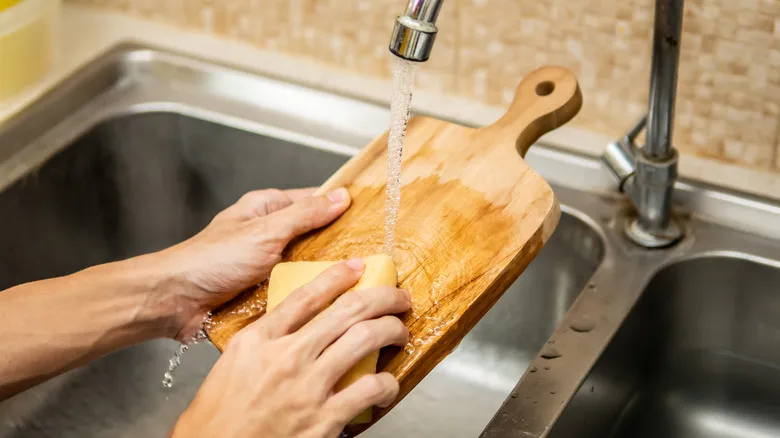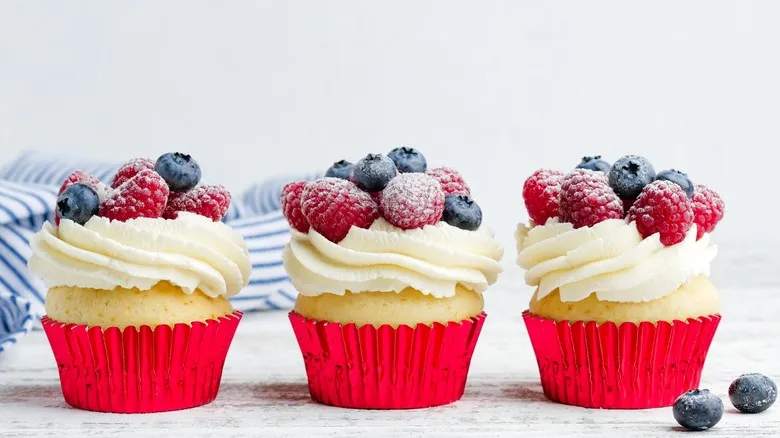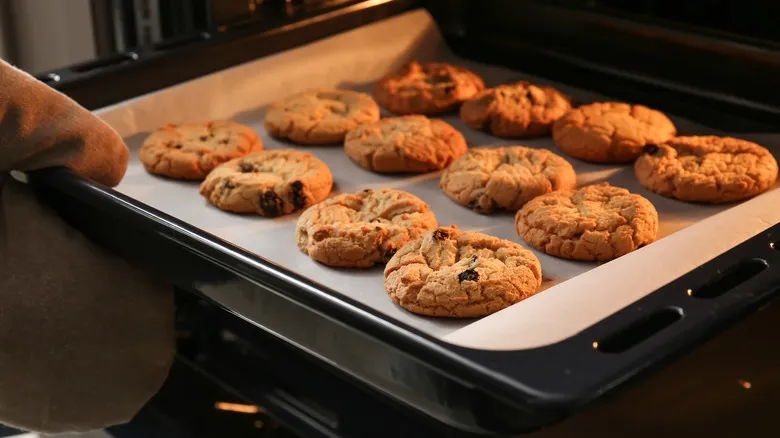Cleaning both sides prevents damage and contamination

One drawback of wooden cutting boards is that they require a bit more effort to maintain cleanliness compared to plastic boards. Since wood can warp and become uneven—making it difficult to cut on—you should avoid placing the cutting board in the dishwasher or soaking it in water. Although it may seem counterproductive, it's important to wash both sides of the board. This practice helps ensure that the entire board dries evenly, reducing the risk of warping. If only one side is washed frequently, it may sustain damage over time.
Additionally, cleaning both sides of a cutting board is essential for eliminating all surface dirt and bacteria. If you've used the board for cutting raw meat, there's a possibility that juices could have contaminated the other side. You might also have touched the opposite side or the handle with hands that have come into contact with meat, which can lead to cross-contamination. For overall cleanliness and food safety, it's advisable to wash every part of the cutting board, even if you primarily use just one side.
How to clean your wooden cutting board

When you're ready to clean your cutting board, begin by scraping off any large food remnants into the trash. Next, give it a quick rinse with warm water in the sink. After that, thoroughly scrub the entire surface of the board using dish soap and a sponge or brush. Avoid using steel wool or any abrasive materials, as they can scratch the board. Once you've rinsed the board, dry it with a clean cloth or paper towel, and then allow it to air dry completely.
A wooden cutting board should be washed after each use, and to maintain its cleanliness, it's advisable to sanitize it approximately once a week. There are several methods to sanitize your cutting board using hydrogen peroxide, bleach, or vinegar, but one of the most effective ways to eliminate germs is to sprinkle baking soda on the board and scrub it with a half lemon. To enhance the longevity of your wooden cutting board, apply a thin layer of mineral oil or beeswax once a month. This will keep the wood looking shiny and attractive while helping to prevent deep stains.
Recommended

It's Probably Far Past Time To Throw Out Your Flour

Shortening Is The Secret To Super Fluffy Homemade Frosting

The Temperature Of Your Eggs Makes A Huge Difference In Chocolate Chip Cookies

The Secret Behind Luxurious Restaurant Soups And Sauces Is A Bit Of Butter
Next up

